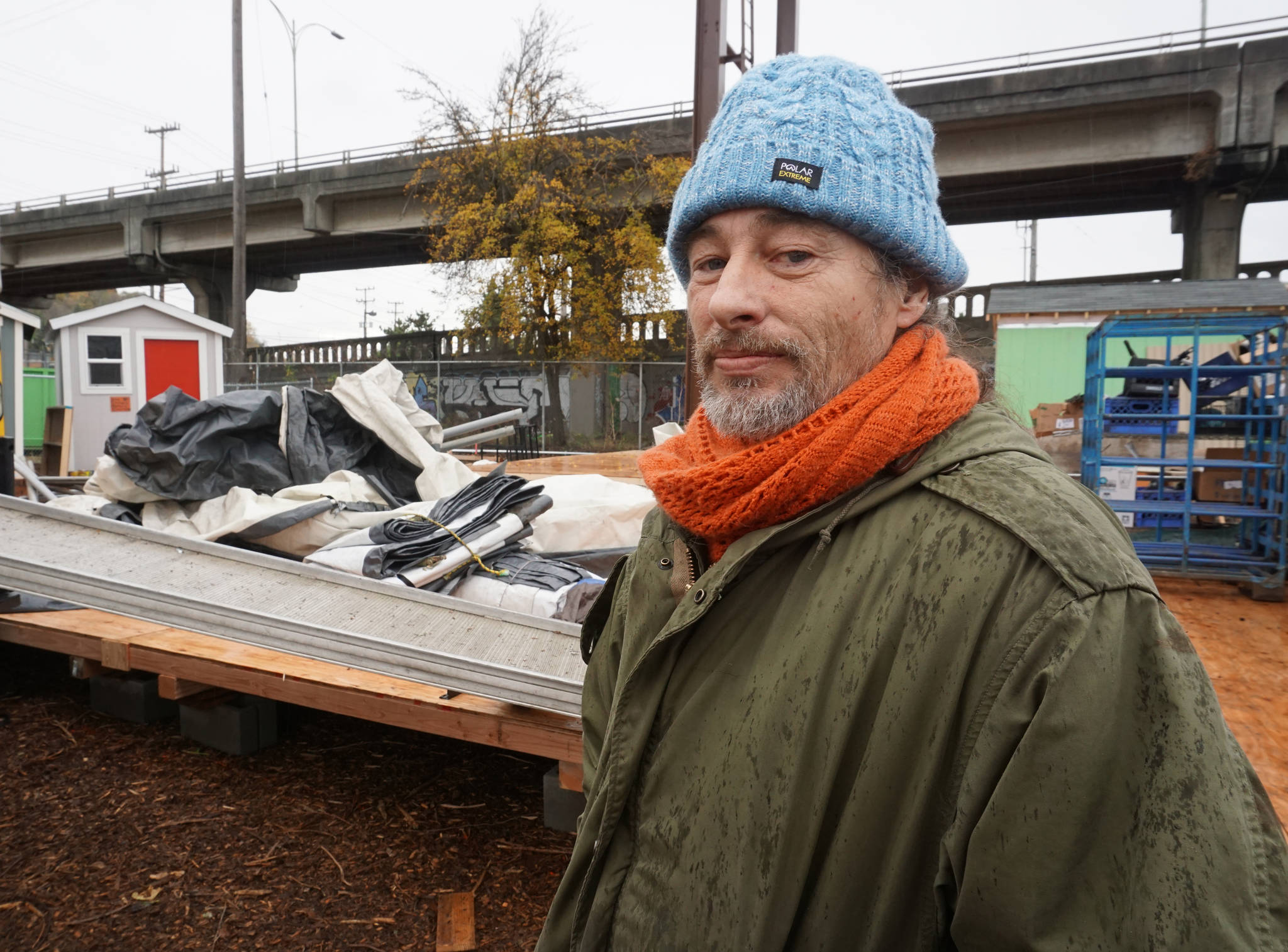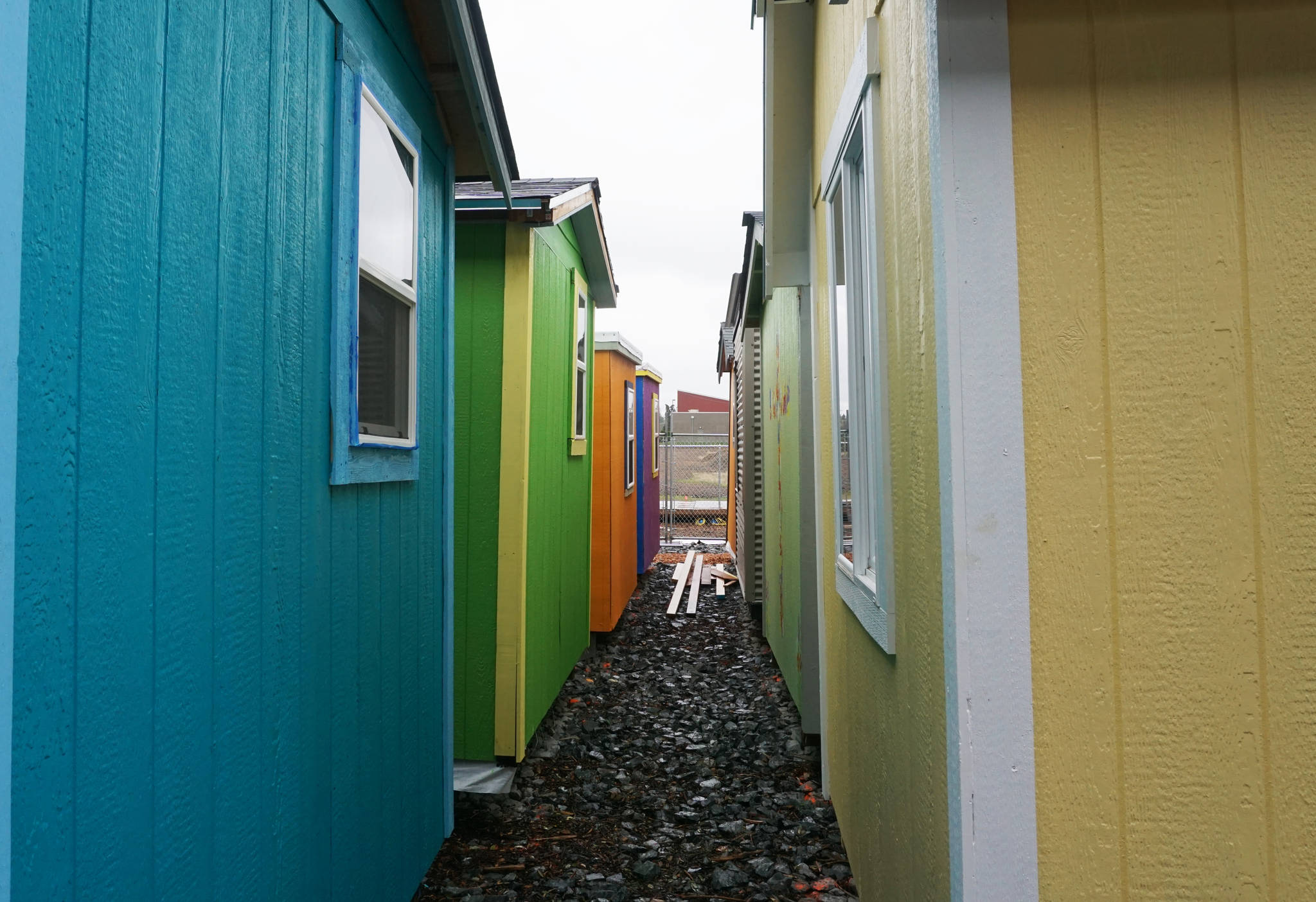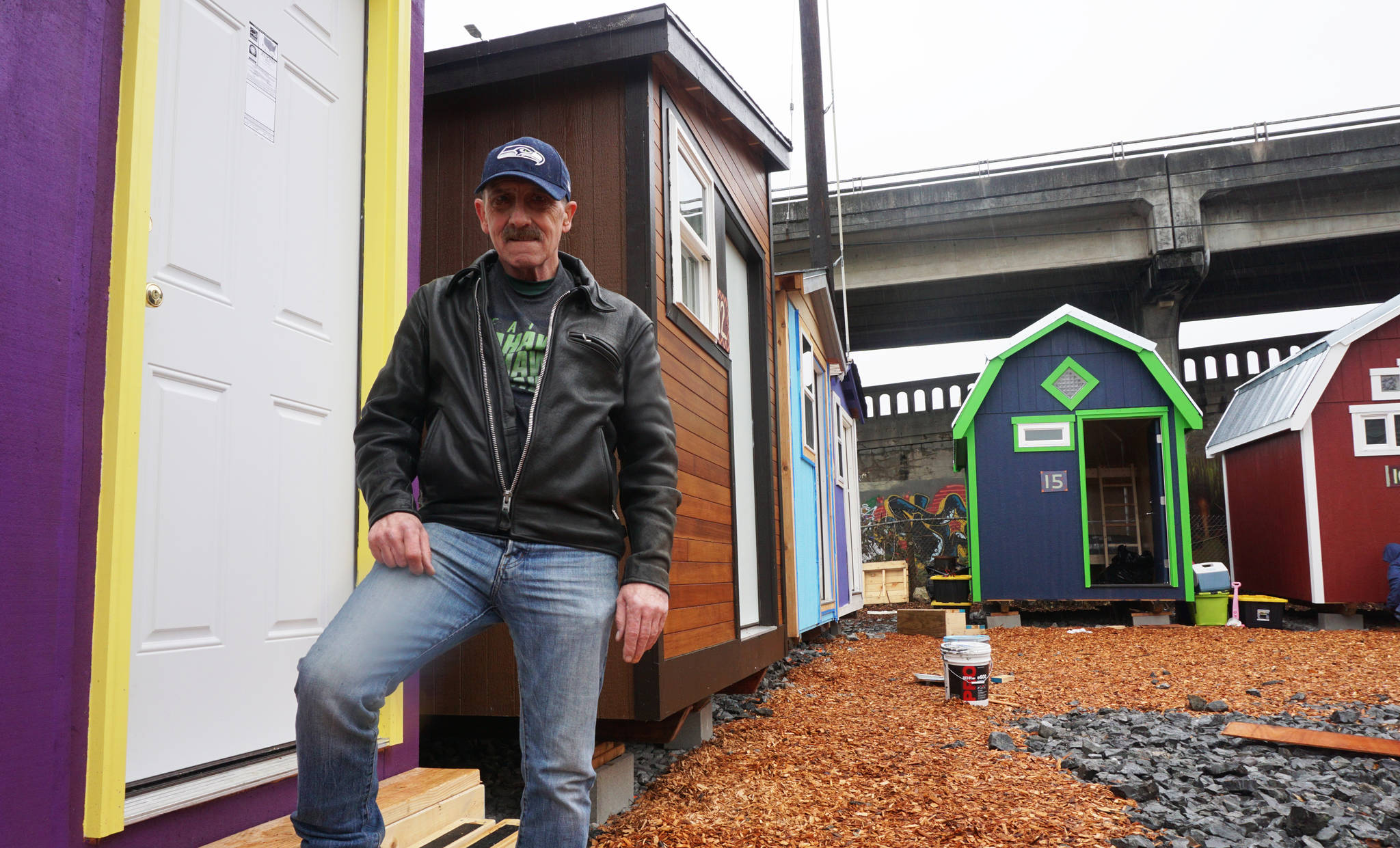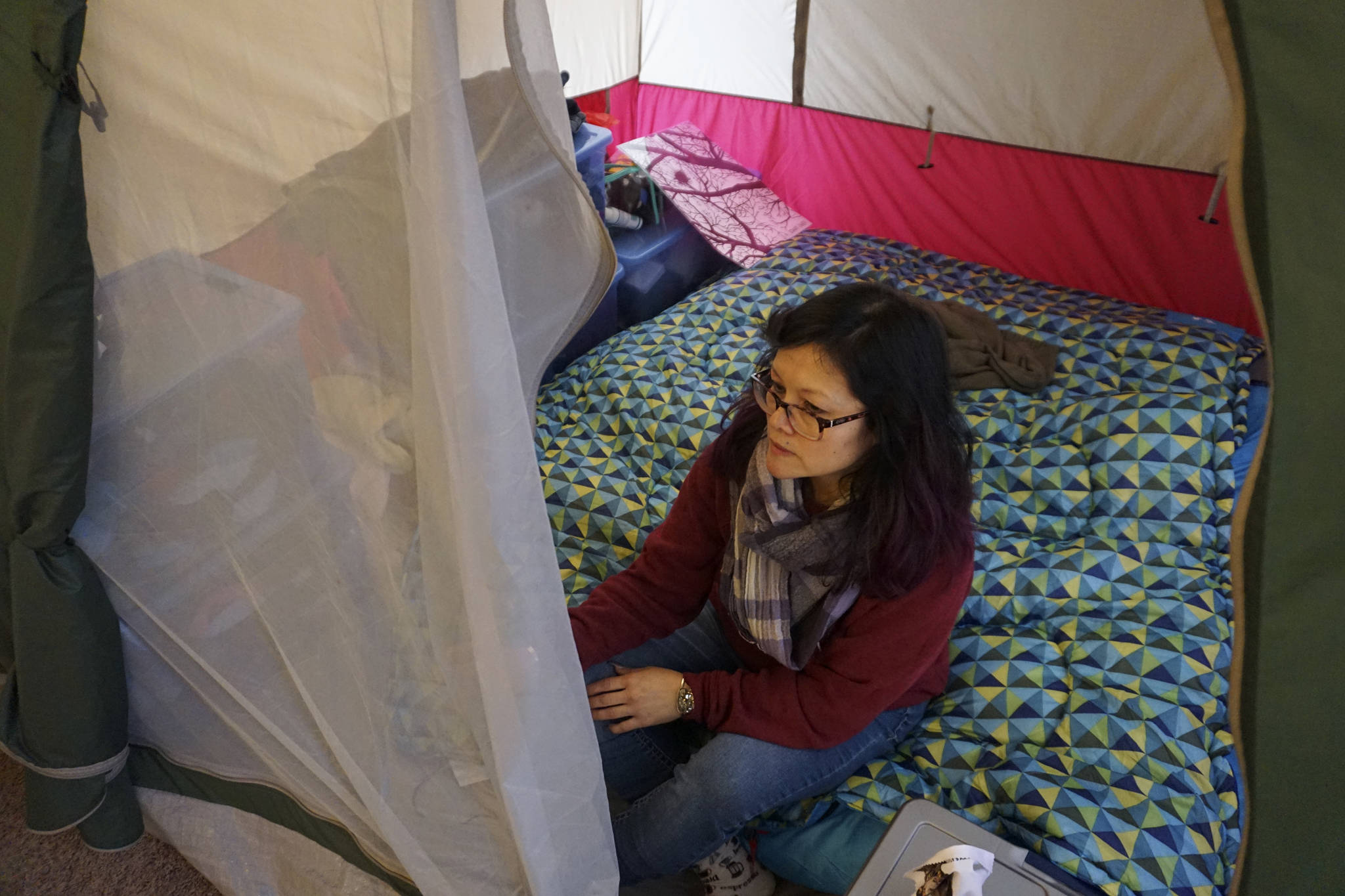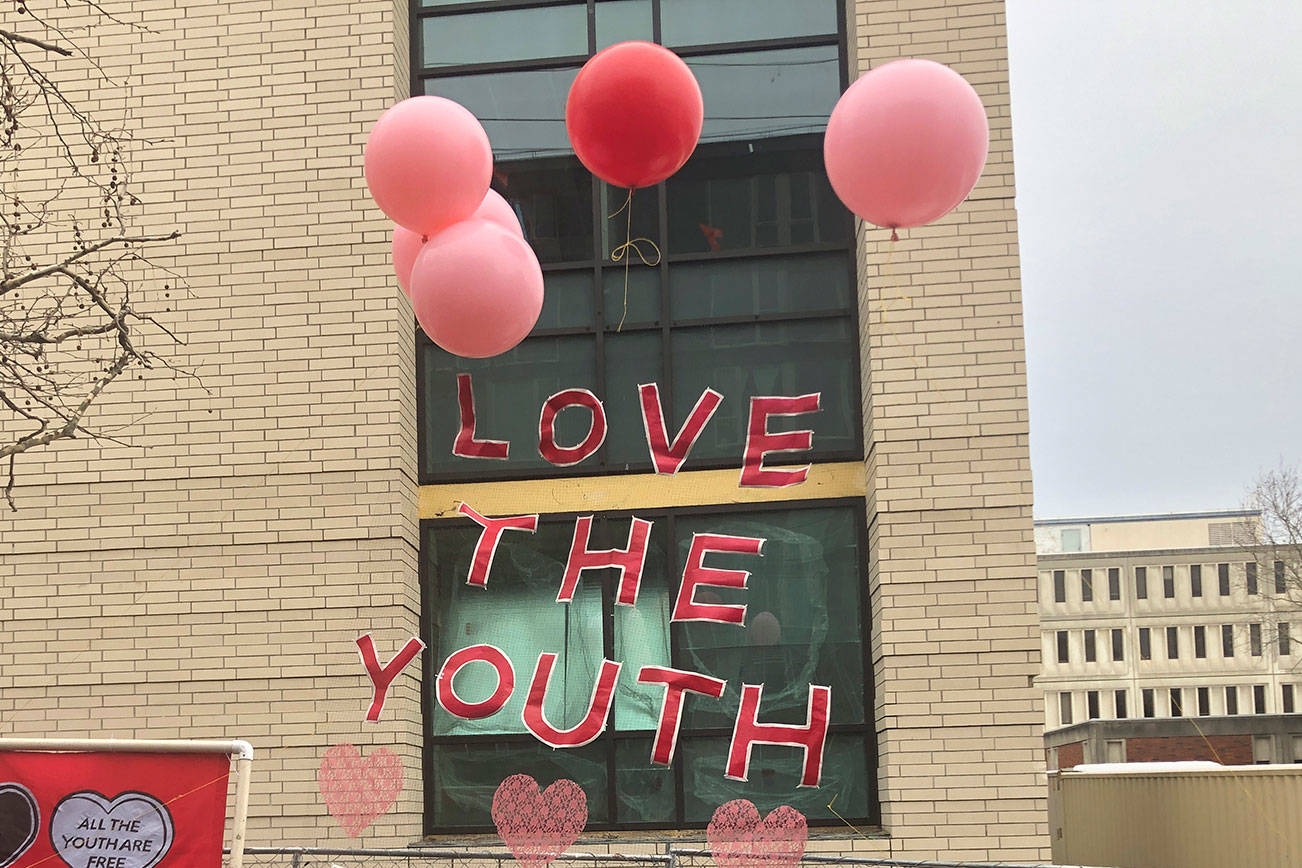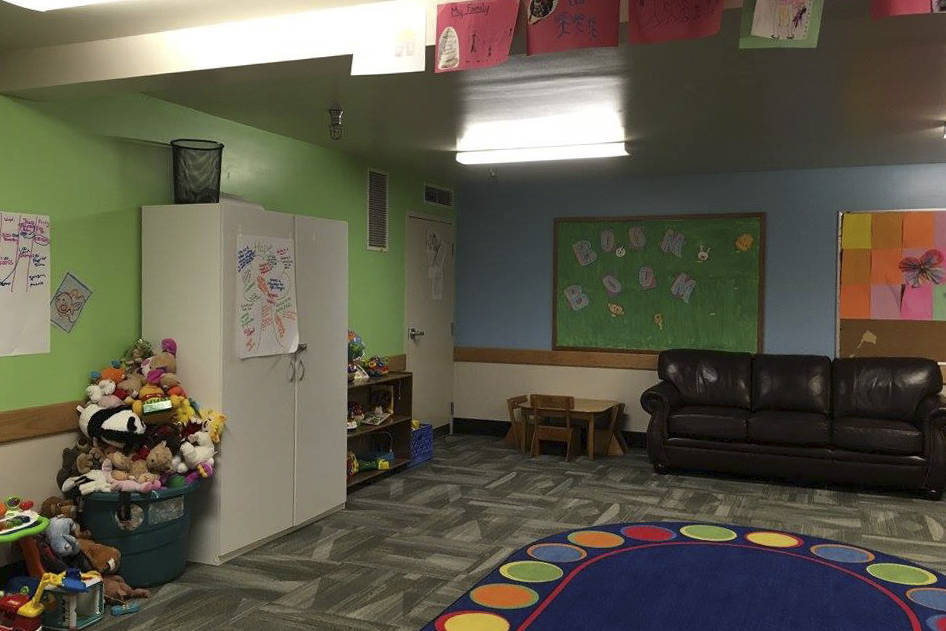Since Benny Clevenger became homeless seven months ago, his grandmother’s quilts have remained tucked away in a plastic tub, awaiting the day that he lays them on his bed again. He fondly recalled one quilt with multicolored yarn that his grandmother had carefully crocheted for five years. “It ain’t quite as secure in the tent; better packed up in a … tub than out in the tents,” the 40-year-old Clevenger said in a Southern drawl.
A roofer for 20 years, Clevenger found himself without a roof over his head last year when he and his wife relinquished their South Lake Union apartment because there were too many people living there who weren’t on the lease. Since then, he’s lived in Tent City 5 in Interbay and worked temporary gigs as a mover.
On Thursday, Clevenger relished the idea of displaying heirlooms in his new place as one of about 65 homeless people who moved from Tent City 5 to a tiny home village in Interbay. He said he plans to hang family photos on the bare wooden walls without the fear of a tent leak ruining his prized possessions.
The rows of multicolored tiny homes sit on a plot of land owned by the Port of Seattle that is being leased to the City for at least the next year. Eventually, the sober village with 30 tiny homes will be equipped with electricity and heat. It will also boast a community space, shower, and kitchen facilities, a counseling office and round-the-clock security.
The move was a long time coming. In September, the Port of Seattle commissioners voted to allow residents from Interbay’s Tent City 5 to move onto the property a few blocks away, following months of lobbying from campers and their supporters.
The tiny home villages are the City’s response to unsanctioned homeless encampments and a dearth of 24-7 shelters for homeless people. In 2015, then-Mayor Ed Murray and the Seattle City Council passed legislation that created the first three homeless encampments in Ballard, Othello, and Interbay, where Tent City 5 was located. The camps were so successful that on December 1, 2016, the City announced three more sanctioned encampments in Georgetown, West Seattle, and North Seattle.
Under the legislation, the permits for each encampment expire after 12 months and can be renewed for another year. As the two-year expiration date for Tent City 5 approached, campers feared losing the ties they had developed with local homeless service providers. For Clevenger, the tiny homes are a step up from tents. The move to a nearby location also enables residents to continue shopping at the nearby QFC and visiting churches that they’ve frequented for the past two years, Clevenger added.
“Thousands of vulnerable people are living unsheltered in Seattle every night, and with the help of our partners, we are taking an innovative approach to help move people away from living unsheltered into an environment that combines self-management with professional case management,” William Lemke, the director of communications for the City’s Homelessness Response, wrote in an email to Seattle Weekly. “Permitted encampments have demonstrated that they are working to help people stabilize and move on to more permanent housing. We also have found that neighboring communities and businesses respond positively to the sanctioned encampments and their residents,” Lemke added.
Clevenger moved to Seattle two years ago from San Angelo, Texas, which, “if it wasn’t for the mesquite trees it would be a desert,” he said with a chuckle. He spoke effusively about his attraction to Seattle and desire to stay, despite his recent hardships. “Now I’ve seen the mountains fall into the ocean with the sky as a background,” Clevenger said. “That’s definitely majestic.”
The stability that his new tiny home offers gives him hope that he’ll be able to start working on construction sites and eventually start his own roofing business here. “Now that we’re going to be getting into some of these structures, we’ll be able to sleep a lot better,” he said. “Sometimes you don’t sleep too good always having to watch your back.”
On Thursday, Clevenger helped roll water jugs down a moving truck’s ramp as the rain blew sideways. The camper’s personal items and donations were piled on a wooden platform underneath a canvas canopy. A box full of Christmas decorations with red and gold ornaments was strewn among stacks of wooden chairs and a plush rocking horse.
Brad Gerber, the Low Income Housing Institute’s (LIHI) Tiny House’s program director, leveled a tiny house by removing rocks from the foundation and placing a cinder block underneath. He and LIHI volunteers have spent the past few weeks preparing the homes that were built off-site by volunteers. Some Seattle University students helped out by painting house numbers onto the facades of the tiny homes as well.
“There’s a huge quality of life change,” Gerber said. “Compared to shelters, this a huge step up. You can leave your stuff during the day … you can stay with pets, partners, possessions, all those kinds of most important things,” he added. A bus stop across the street also allows the residents to easily access appointments and potential job opportunities.
Jerry Ohmer, 61, screwed a bolt into the door frame of a purple tiny home with yellow trimming. He began volunteering at tiny house villages after his own stint at the Othello Tiny House Village last year.
Ohmer flipped homes for several years until some injuries put him out of work about two years ago. Until a friend recommended that he check out the Othello village, Ohmer says that he was hardly eating or sleeping and had nearly given up on life. He had never been homeless before and didn’t know where to find resources.
“I knew nothing about the system,” Ohmer said. But the village provided him with a sense of community and gave him purpose again. Now he rents his own apartment and works as the LIHI special projects assistant.
“LIHI and Othello Village … gave me back my life, literally. And this is my way of just saying thank you,” Ohmer said.
